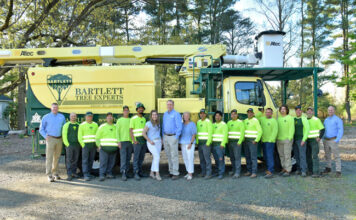Green Roof Life-cycle Assessment
By Adam Friedberg and Jordan O’Brien
The financial decision whether to install a green roof should be considered on a case-by-case basis as the variability in structure, municipality, ownership, tenant, investment, technology, climate, installer experience, etc., requires specific attention. In some cases, a life cycle assessment will help decision-makers to better understand the impacts of a green roof over the long-term. With this in mind, a cost-benefit model was developed by the authors to compare the costs of green and conventional roofs — the installation, maintenance and replacement of the roof — with the benefits, savings and value produced by green and conventional roofs, as part of a larger study for the United States General Services Administration (GSA).
A green roof is a holistic sustainability strategy that has direct and indirect benefits for multiple stakeholders including developers and owners through installation costs, rental impacts, operational costs, to name a few; municipalities through reduced infrastructure maintenance or replacement costs; the community through improved aesthetics, biodiversity, and/or green job creation; and building occupants through productivity gains and/or improved psychological and physical well-being. To account for these numerous costs and benefits, the analysis reviewed various methodologies and studies of green roof cost-benefit analyses.
The most frequent benefits found and studied in the cost-benefit analysis can be found below. While some benefits are quantifiable, others are more qualitative and have limited quantitative evidence.
Stormwater benefits
Many municipalities require stormwater management onsite. Compared to a conventional roofing system, which requires additional stormwater management practices such as cisterns, retention ponds, etc., green roofs may be credited toward achieving the regulatory requirements. These best management practice (BMP) stormwater measures also require capital and maintenance costs and, therefore, should be included in an analysis.
Municipalities may impose runoff fees to help replace the cost for future citywide stormwater infrastructure required by a Long Term Control Plan, and/or incentivizing future runoff rates such as is the case with the Washington, D.C. utility fee. Such fees may be mitigated through a green roof, depending on the project type.
The green roof might also affect public infrastructure, whether the stormwater in a particular city is discharged into a Combined Sewer Overflow (CSO) system, and/or captured and filtered in other ways. Maintenance, such as cleaning and replacement of filters used in the capture/filtration process, must be accounted for. Of course, in an area reliant on a CSO system, the cost of energy and materials required to treat stormwater at the sewage treatment plant will also be borne by the public either through taxes or fees – a point that should be accounted for in any such analysis.
Additionally, if future legislation regulates the quality of stormwater discharge, a green roof may improve or degrade the stormwater (depending on limited pollutant) and so, this may also need to be taken into account.
Energy benefits
The energy cost-savings potential of a green roof is dependent on climate, energy costs, location, and building and mechanical design. It is also dependent on the building’s shape (i.e. the impact of a 10, 000-square-foot green roof on a 10-story building compared to a two-story building). The amount of energy to cool or heat the building can be affected by the temperature of the air intake, specifically rooftop equipment. The green roof can provide a more stable environment on the roof; one that is cooler when it is hot and warmer when it is cold, which can reduce cooling and heating requirements. In addition, the potential energy savings from the green roof may help achieve carbon credits if available.
Biodiversity benefits
Biodiversity is very difficult to measure economically but its value is generally created by adding biodiversity back into dense urban regions. Organizations and governments have designed schemes to value biodiversity financially by creating credit systems, or banking systems — the BushBroker scheme and the biodiversity banking system (BioBanking) for example. In addition, there is potential economic value to bee farms and nearby agriculture with a green roof having the potential to attract bees to pollinate plants.
Heat island benefits
The indirect effect of the ability for green roofs to mitigate the heat island effect is substantial. Reducing heat island has a societal affect that can reduce average and peak temperatures, air pollution, and heat/pollution related illness. The addition of green roofs, specifically at a citywide level can have an economic benefit — the reduction in daily and peak temperatures as a result of reducing the temperatures of the surroundings.
Agricultural benefits
Agricultural services such as food, biofuel and nursery growth could generate benefits from green roofs, though they are typically not observed on roofs with three-or six-inch growth medium.
Acoustical benefits
Buildings below highways or high-air-traffic areas can receive benefit from a green roof through noise mitigation. However, the benefit may be limited to green roofs under these conditions.
Clean air benefits
Green roofs may help to mitigate air pollution. The absorption, temperature cooling and sequestration ability of the green roof can potentially offset air treatment systems for NOx, SOx, PM and CO2. In addition, at the city scale, the green roofs cooling ability (see Heat Island Benefit above) potentially even further offset NOx and Ozone.
Aesthetics and quality-of-life benefits
Productivity increase and reduction in absenteeism due to green roofs is difficult to quantify for building tenants, though there continues to be more emerging evidence. Neighboring buildings may also achieve approved visibility when comparing a green roof to a black or white roof.
Real estate effect
The commercial rents, expenses, vacancy, discount rates and absorption and lease lengths should be identified due to the market value of a green roof. Green buildings realize approximately six percent more rent nationwide, and with green roofs accounting for a significant portion of the green building premium (if this building pursues a green building certification), it is suggested that the green roof carry a potential premium of approximately one to three percent.
Roof longevity benefits
The lifetime of the green roof is significant considering that the lifetime of a well-installed green roof is at least double that of a black or white roof. For a short-term stakeholder, this benefit is minimal, since roof replacement is unlikely in a 10-year timeframe; however, a long-term stakeholder may have to replace their black or white roof twice in 50 years. Therefore, green roofs offer a deferred replacement cost compared to its alternatives. However, it may be necessary to replace a green roof once over a 50-year timeframe, depending on the quality of the membrane. If this is the case a premium should be added to the installation cost to account for the labor needed to remove the medium. Resale is a possibility for many of the components of the green roof. Membranes for all roof types will need to be land-filled or possibly recycled depending on the condition.
Case study (a green roof on a government building in Washington, D.C.)
Approximately two-thirds of the District of Columbia is owned by the Federal Government. A typical government building was selected to determine the cost-benefit of installing a multi-course extensive green roof compared to a protected membrane roof (PMR) black roof.
The cost-benefit analysis included inflation, growth rates for labor and materials, energy, stormwater, community benefits, and diminishing returns based on increases in market supply and experience, a discount rate evaluation and a 50-year timeline.
Discount rate
Although common throughout Europe (and certainly not a new strategy), some developers in North America perceive green roofs as a potential risk (compared to the black or white alternative), and there is potential risk of acceptance due to required ongoing maintenance for the occupants. If this is a concern, selecting the discount rate and an appropriate contingency is necessary.
Timeline
The timeline of the investment also needs to be considered. Green roofs pose a lifetime of at least twice that of a conventional black or white roof, however commercial investors may only be interested in a 20-year or less investment. In that time, a black or white roof may not need to be replaced. However, long-term holders, such as the federal government, may have a timeline of 50 years. In this case, the replacement cost needs to be included in the analysis for the conventional roof and even the green roof (approximately in year 40), as well as a placing premium on green roof replacement.
A multi-course extensive green roof was analyzed. Nominal growth rates such as labor and materials, stormwater costs, energy prices, carbon (if valued), community benefits (inflation), rent, absorption and retention, were included in the cost-benefit analysis.
Stormwater equipment costs (equivalent BMP/equipment cost for stormwater management) and surcharges (stormwater utility fee and water impervious charge in the District of Columbia), heating and cooling savings (and carbon savings associated with the energy savings), and carbon sequestration were included in the cost-benefit analysis. As a result, a 12,000-square-foot green roof on a building in Washington, D.C. resulted in a net present value of -$7,075, a payback of 6.5 years and a return on investment (ROI) of 193.8%.
Additionally, a real estate assessment analyzing the risk (capitalization rate), average rent, average vacancy, absorption and tenant retention in Washington, D.C. were included in the cost-benefit analysis.
Finally, the cost-benefit analysis reviewed the affect on the community by valuing the benefit green roofs have on biodiversity and habitat, air quality, heat island (energy and peak demand), and the wastewater treatment plant.
The assumptions and results of the analysis are shown in Table 1 and tabulated in Table 2.
Sensitivity analysis
A sensitivity analysis was performed to identify the more important variables based on their impact on the total net present value (see Figure 1). Table 3 ranks the most important variables affecting the net present value of the green roof, where the roof life and installation cost have the greatest affect on the net present value.
The cost of a green roof is a major factor for a developer or building owner. Capital costs, maintenance costs, and expected roof membrane longevity are the major factors affecting the net present value. It is important to understand that this analysis was conducted using current data. As more and more green roofs are installed and their performances are monitored, the installation costs, maintenances fees and perceived risk of the technology should all come down, while stormwater fees and energy prices are predicted to rise more than inflation. As a result, green roofs currently look to be a net neutral investment when looking at only the basics (installation, maintenance, replacement, stormwater and energy). However, by broadening the scope of financial return (i.e. carbon, real estate impacts, community benefits, productivity), the financial viability of green roofs as compared to conventional black roofs is bound to become increasingly attractive.
Table 1: Cost-Benefit Assumptions
Building size (eight-story)
100,000-square-feet
Roof size
12,000-square-feet
Discount rate
4.4%
Green roof risk contingency
2.34%
Investment outlook (years)
50 years
Green Roof
Black Roof
Installation cost (more than twice black)
$287,400
$115,900
1st year annual maintenance
$4,400
$700
Roof replacement premium
33.5%
Roof disposal
$4,480
$4,420
Table 2: Building-level financial impacts of a green roof on investor/owner/occupier
Impact on investor/owner/occupier for installation, replacement & maintenance, stormwater & energy
Initial Premium (extra cost)
$114, 238
Net Present Value
-$7,075 (nearly zero)
Payback, years (based on 50-year average of annual savings)
6.5
ROI (50 years with interest on initial investment)
193.8%
Internal rate of return (IRR)
4.2%
Table 3: Sensitivity Analysis
Variable
Roof Lifetime (one-year change)
Installation costs
Maintenance Costs
Discount rate
Heating/cooling savings
Stormwater Equipment Cost
Green roof risk contingency
Disposal costs
Adam Friedberg, PE, LEED AP, is senior sustainability consultant for Arup in New York, New York.
Jordan O’Brien, LEED AP, is a senior management consultant, Sustainability & Real Estate, for Arup in San Francisco.
Article courtesy of Green Roofs for Healthy Cities (GRHC), and was originally published in GRHC’s Living Architecture Monitor: www.livingarchitecturemonitor.com.
GHRC’s GreenSave Calculator is a life cycle cost-benefit tool available to members online.



